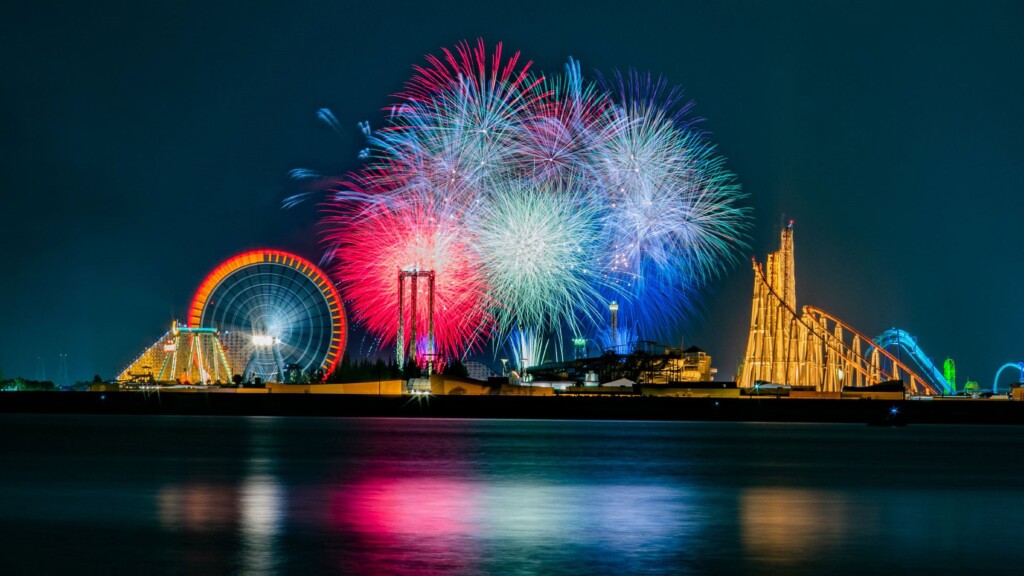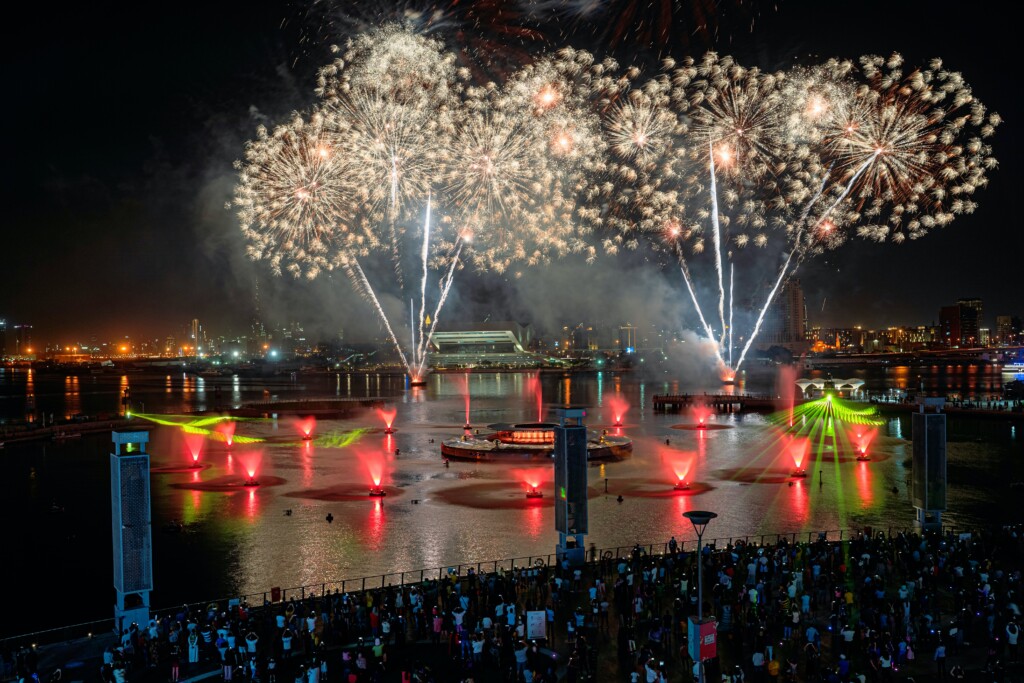
There are only a few nights a year when we have a chance to photograph these spectacular pyrotechnic shows. New Year’s Eve, Guy Fawkes Night the Fourth of July.
Yet photographing fireworks can be very tricky. What speed of shutter are you using? Where, and how, are you focusing in the dark? And what tools do you need? Below, I respond to all of this and share my top tips to help you learn how to photograph fireworks like a pro.

Top tips for successful photography of fireworks
1. Get your shot planned
Planning is important, as with any form of photography. Think about your shot, what you want to accomplish, and how you can build the final result before you head out to shoot. Think about your shooting spot, what equipment you’re going to need, and what settings you may want to use.
2. Scouting your position in advance
At least consider getting there early if you can’t get to the location beforehand to decide the best composition for the shot. Before the fireworks show begins, this will give you a chance to think about your composition, set your target, and take a few test shots. Arriving early can also mean that you get a good location from which to photograph.
3. Let the camera acclimatize
It can cause condensation to develop on the lens by bringing your camera out of a warm house on a chilly evening. Make sure that you arrive ahead of time to allow your camera time to adapt to the cooler temperature to prevent this.
4. Get innovative with your composition
You don’t necessarily want a pure black sky when framing pictures of fireworks. There are so many ways in which you can produce more innovative results simply by understanding the environment.
The consideration of elements that you should use in the foreground and background of the picture is one of the best ways to achieve a more artistic composition. In the background, maybe to one side, of the show, are there any buildings you might include? An extra imaginative touch can also be applied by adding interesting foreground elements such as water or other reflective surfaces. However, what you don’t want are obstacles that will cover the fireworks and block them, so keep that in mind when choosing your spot.

Fireworks Photography Equipment & Settings you need
Knowing what tools you need and what camera settings to use for photographing fireworks is what many people struggle with. The good news is that everything is relatively easy. You don’t need any fancy gear, and I’m going to share some guidelines that will provide a decent starting point for camera settings.
Recommended equipment
There are really only two important pieces of fireworks photography equipment: your camera (any DSLR with the ability to work in manual mode) and a decent tripod. You should look for a stable place to rest your camera, like a wall or a floor, if you don’t have a tripod.
Other pieces of equipment that you may want to have at hand include:
- Second Battery
- Second Memory Card
- Shutter release cable – A cable release, while not necessary, helps to minimize camera shake when shooting long exposures.
- Torch- If you want to illuminate some parts of your scene or even the buttons on your camera, this can be helpful.
For these types of shots, you don’t need a large range of lenses either. Zoom lenses can be a good choice as they provide the ability to adjust the focal length quickly and easily. Just bear in mind that you may need to review and maybe modify your attention for any shift in focal length. Generally, wider angle lenses are better as they allow you to catch more of the shot, but you may want a slightly longer focal length if you are shooting some distance from the fireworks.

Settings on Camera
- Mode Manual mode is the best mode to shoot in since this is the only mode that will allow you complete control of the final outcome.
- Focus mode The best way to guarantee a sharp picture is to set your focus to manual mode. Your camera might not be able to focus on time if you rely on autofocus, causing you to miss the shot. You can set your camera to autofocus, focus on a spot, and then turn to manual focus if you’re still not comfortable using manual focus.
- Shutter speed A slower shutter speed is usually the safest shutter speed for fireworks. Since a long exposure will allow you to catch a good amount of light, I would suggest starting somewhere around one minute.
- Aperture Set your aperture to f11 as the starting point. This should ensure that, when balancing the light from the long exposure, you have good depthfield.
- ISO As a rule, whenever possible, I like to fire at the lowest ISO, and this is no different. To start and change it, set your ISO to 100 (or as low as it will go) if you need to.
- Noise reduction Although you can leave this feature off for your test shots, if your camera offers it, it can be useful to have on during the show. Allowing this feature will, however, slow the speed of writing and increase the time it takes to preview the images.
The next time you shoot fireworks, these settings can serve as a reference and provide a decent starting point, although it might take a couple of shots to get a perfect balance. Try opening the aperture or rising the ISO if the fireworks are too dim. However, you might need to increase or decrease the shutter speed if the surrounding lights in the scene are too bright or too dark.

